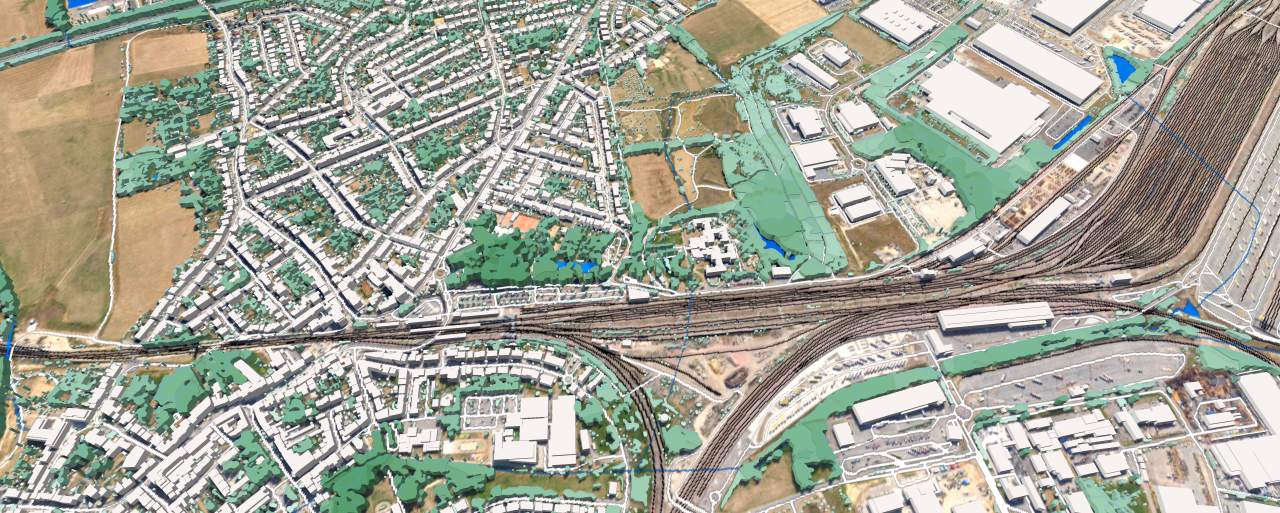In today's interconnected world, where mobility is essential for both individuals and businesses, reliable connectivity along railway routes is more crucial than ever. By creating high-resolution 3D map data, we feel that we are contributing to creating uninterrupted communication in modern cities. VISICOM's latest project is the creation of 3D maps along the Luxembourg railway network.
Luxembourg, despite being one of the smallest sovereign states in Europe, boasts a well-developed railway network that plays a crucial role in facilitating daily commuting for a significant number of people. Around 100 thousand individuals commute to Luxembourg from neighboring France, Belgium, and Germany for work each day, emphasizing the importance of an efficient transport system. The railway network accommodates this influx by considering the commuting patterns, ensuring smooth travel for commuters. It is obvious that such a flow of business community needs perfect real-time communication.
Improving connectivity along railway routes requires 5G technology.
In Luxembourg, railway infrastructure is augmented by a 5km buffer zone surrounding the tracks. This zone serves as a dedicated corridor for installing 5G base stations, antennas, and other equipment, ensuring comprehensive coverage along the railway route. By strategically placing 5G infrastructure within the buffer zone, railway operators can guarantee uninterrupted connectivity for trains and passengers, even in remote or challenging terrain.
The integration of 5G technology with railway networks brings unprecedented connectivity and data transmission speeds. With ultra-fast, low-latency communication capabilities, trains, stations, and rail infrastructure can communicate seamlessly in real time. This enables a wide range of applications, including remote monitoring and control of trains, predictive maintenance, and enhanced passenger services.
With the necessity of deploying a 5G network, high-resolution 3D digital maps are becoming essential. These maps provide detailed spatial information about the railway infrastructure, including tracks, stations, bridges, and tunnels, in a three-dimensional format. By incorporating 3D digital maps into the 5G-enabled railway network, operators gain valuable insights into the physical layout of the rail system, enabling more efficient planning, maintenance, and operations. Furthermore, 3D digital maps support advanced applications such as augmented reality (AR) navigation for train drivers, predictive modeling for infrastructure upgrades, and immersive training simulations for railway personnel.
In conclusion, the convergence of 5G technology, 3D digital maps, and railway networks heralds a new era of connectivity, efficiency, and innovation in rail transportation. By harnessing the power of 5G and leveraging the insights provided by 3D digital maps, railway operators can unlock unprecedented levels of performance, safety, and passenger satisfaction, shaping the future of mobility and urban development.


